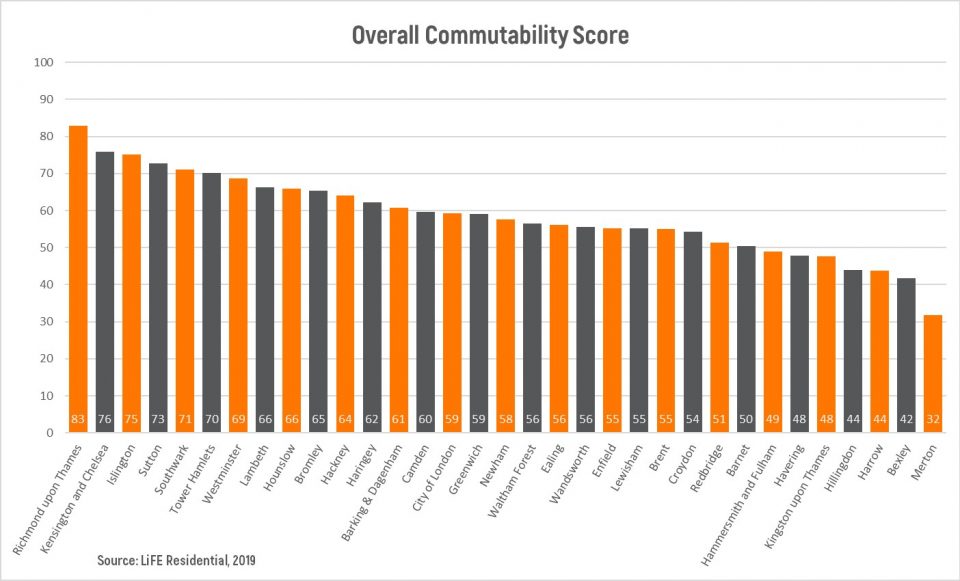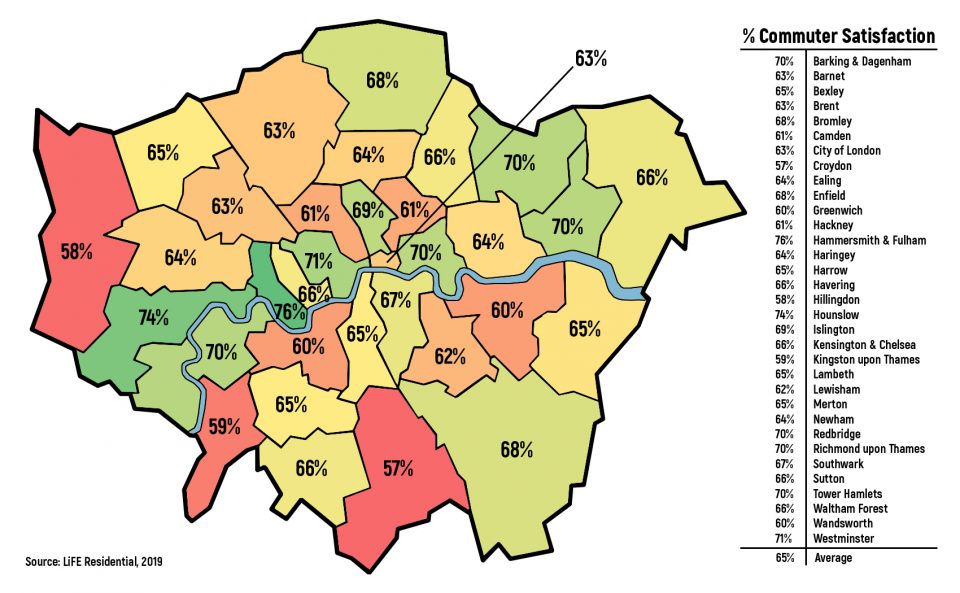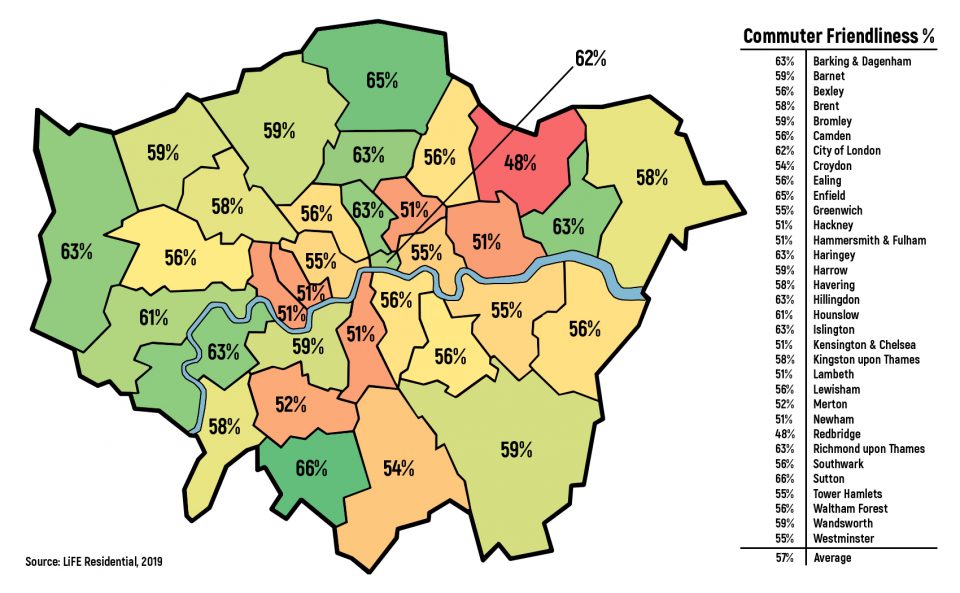Revealed: The outer London borough that locals say has the best commute

Sweaty summer mornings on the Northern line getting you down? Been apologised to over a tannoy one too many times? Sick of travelling with a lower level of comfort than someone’s handbag?
You might want to consider a move to Richmond-Upon-Thames, which despite all of its train and tube stations being in zones three to six, comes out top in a survey of the best London boroughs when it comes to commuting.
The survey, carried out by estate agent LiFE Residential, asked more than 700 residents across all of the 33 boroughs not just about the time it takes to get from A to B but also the cost, how friendly their fellow commuters are and how ‘satisfied’ they are with their commute as a whole.
While residents of Hammersmith & Fulham, Hounslow and Westminster report being slightly more satisfied with their commute, affluent Richmond has the lowest monthly cost at £44 (suggesting many cycle into London), as well as a short journey time of 27 minutes putting it in the top spot overall.

Richmond station has fast train connections to London Waterloo in as little as 21 minutes, while most other train stations in the borough can reach it in less than 30. Many are also on the District Line or London Overground.
Merton in South West London is rock bottom on the overall index, owing largely to it having the longest average commute time at an agonising 62 minutes.
It also had the second-highest monthly cost at £137, topped only by Havering’s £147.
Unsurprisingly Kensington & Chelsea has the shortest commute at 26 minutes, and this contributes to it coming second in the overall ranking. The average London commute lasts a fairly reasonable 39 minutes and costs £96 per month.
The overall top five is completed by Islington, Sutton and Southwark, while Kingston-upon-Thames, Hillingdon, Harrow and Bexley launguish along with Merton in the bottom five.

Sutton’s commuters are the friendliest, with a rating of 66 per cent, while Redbridge’s have the most room for improvement at 48 per cent.
West Londoners are generally a friendlier bunch than East, with Hillingdon and Richmond also scoring highly at 63 per cent. Residents of Hackney and Newham could probably do with a refresher on their public transport etiquette, having both scored a fairly low 51per cent.
are house prices impacted?
But how much do people take the commute in to account when it comes to deciding where to live – and can the prospect of an easy journey increase the price of homes?
Jonathan Werth, managing director of LiFE Residential, says that ultimately it is one of many factors. “House price increases are really controlled by supply and demand. But when you look at individual locations, that supply and demand dynamic is definitely affected by factors like the ease of the commute,” he says.

For example, he says people who have a stress-free journey to work tend to stay in their property for longer, resulting in “not as much movement” in areas that are particularly well-connected.
This can mean that prices are driven up when a property does come on the market – something that has definitely been the case in desirable Richmond.
Werth adds that areas on the Crossrail line could become more popular once the stations open – particularly in the boroughs of Tower Hamlets and Newham which will be home to the Canary Wharf and Custom House stations. Developments here will benefit from being the first places commuters see when they come out of the tunneled section of the route, he says.
So if you are reading this halfway through a gruelling 62 minute journey from Merton, take note – it doesn’t have to be this way.